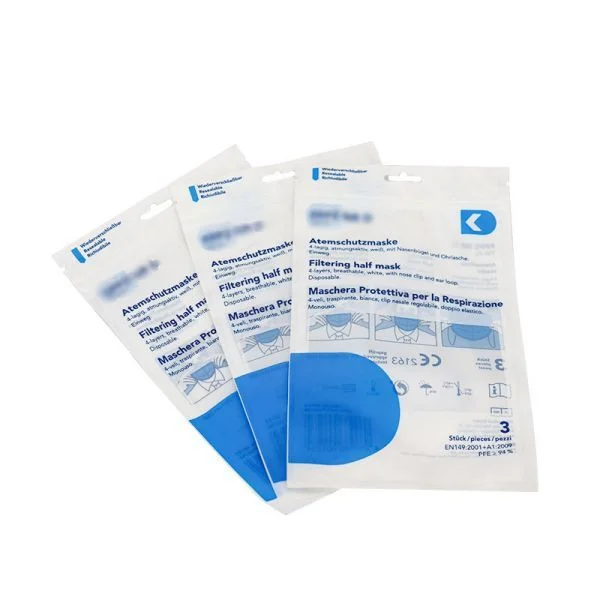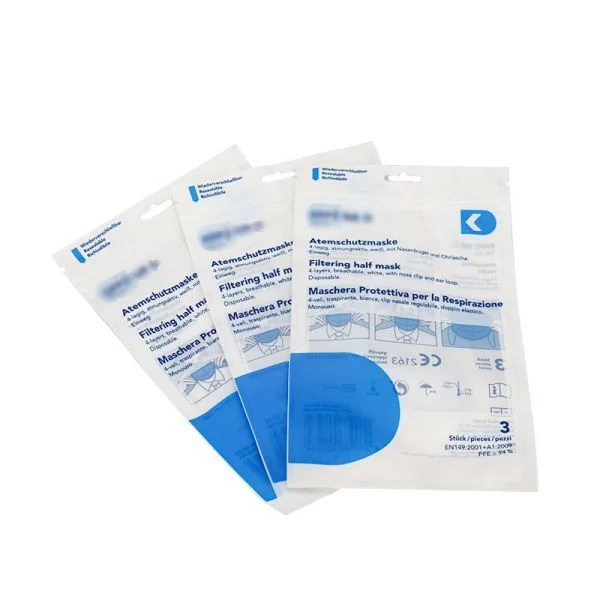In the current global health crisis, face masks have become an indispensable part of daily life. With the increasing demand for masks, the importance of their packaging cannot be overlooked. Sunkey Packaging mask packing bags play a crucial role in protecting masks from contamination and ensuring their safety and hygiene until use. Industry experts have provided insights into the safety and environmental protection aspects of mask packing bags, highlighting their critical features and materials.

Material Composition and Properties
Mask packing bags are typically made from a variety of materials, each with its own unique properties. The most commonly used materials include polyethylene (PE), polypropylene (PP), and PET.
-
Polyethylene (PE): PE is known for its excellent moisture resistance and flexibility. It forms a tight seal, protecting the mask from moisture and humidity, which can lead to bacterial growth.
-
Polypropylene (PP): PP is noted for its high temperature resistance and good abrasion resistance. This material can withstand changes in temperature, making it suitable for various storage conditions.
-
PET: PET, or polyethylene terephthalate, is lightweight yet strong, with excellent tear resistance. It provides a durable barrier that protects the mask from physical damage.
These materials have been chosen for their ability to safeguard the mask from external factors such as dirt, moisture, and physical abuse. The combination of these properties ensures that the mask remains in pristine condition until it is ready for use.
Safety Features
Industry experts emphasize the importance of maintaining the hygiene and safety of mask packing bags. This includes the use of materials that are non-toxic and free from harmful chemicals.
-
Non-toxic Materials: The materials used in mask packing bags are carefully selected to ensure they do not release any harmful substances that could contaminate the mask. This is particularly crucial in medical settings where the highest standards of hygiene are required.
-
Barrier Properties: The packaging bags are designed with multi-layer structures that provide an effective barrier against microorganisms, dust, and other contaminants. This ensures that the mask remains sterile and ready for use.
-
Seal Integrity: The sealing process is critical in maintaining the hygiene of the mask. High-quality sealing techniques ensure that no air or moisture can penetrate the packaging, preserving the mask's integrity.
Environmental Protection
With the growing awareness of environmental issues, industry experts are increasingly focusing on the sustainability of mask packing bags.
-
Biodegradable Materials: Some manufacturers are now using biodegradable materials such as PLA (polylactic acid) and PHA (polyhydroxyalkanoates) in their packaging bags. These materials decompose naturally, reducing the environmental footprint of disposed packaging.
-
Recyclable Materials: Recyclable materials like PE and PP are preferred by many manufacturers. These materials can be easily recycled and reused, minimizing waste.
-
Reduced Packaging: Efforts are also being made to reduce the amount of packaging material used. This not only saves resources but also reduces the volume of waste generated.
Industry experts recommend that consumers look for packaging bags made from sustainable materials and support manufacturers who adopt eco-friendly practices. By choosing environmentally conscious packaging, consumers can contribute to reducing plastic waste and promoting a more sustainable future.
Advancements in Mask Packaging Technology
The mask packaging industry is constantly evolving, with new technologies and materials being developed to meet the changing needs of consumers and the environment.
-
Smart Packaging: Smart packaging solutions, such as those with integrated indicators that show if the mask has been tampered with or exposed to unsuitable conditions, are becoming more prevalent. These innovations enhance consumer safety and trust.
-
Customizable Designs: Manufacturers are offering customizable packaging designs that allow brands to differentiate their products and create a unique identity. This personalization can also include eco-friendly messaging to appeal to environmentally conscious consumers.
-
Enhanced Protection: As the understanding of microbial contamination and its impact on health improves, mask packing bags are being designed with advanced protection features. This includes the use of antimicrobial coatings and improved sealing technologies.
The safety and environmental protection of mask packing bags are crucial considerations in today's market. Industry experts have emphasized the importance of using high-quality, non-toxic materials that provide effective protection against contaminants. At the same time, there is a growing focus on sustainability, with manufacturers adopting practices that reduce waste and promote recycling. As technology advances, consumers can expect to see more innovative packaging solutions that enhance safety, personalization, and environmental responsibility. By choosing the right mask packing bags, consumers can contribute to maintaining hygiene, protecting the environment, and supporting sustainable practices in the industry.

